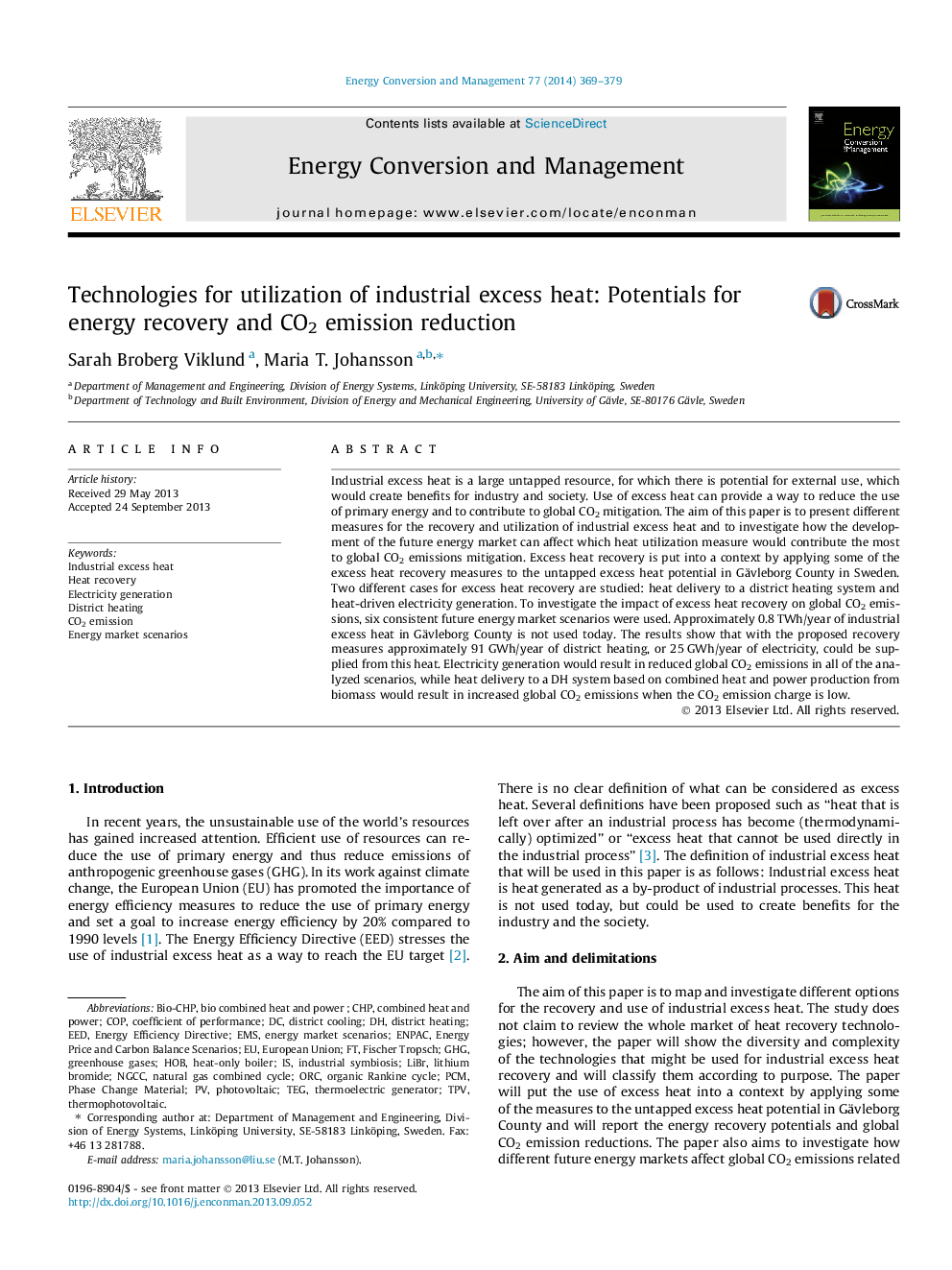| کد مقاله | کد نشریه | سال انتشار | مقاله انگلیسی | نسخه تمام متن |
|---|---|---|---|---|
| 7165787 | 1462885 | 2014 | 11 صفحه PDF | دانلود رایگان |
عنوان انگلیسی مقاله ISI
Technologies for utilization of industrial excess heat: Potentials for energy recovery and CO2 emission reduction
دانلود مقاله + سفارش ترجمه
دانلود مقاله ISI انگلیسی
رایگان برای ایرانیان
کلمات کلیدی
NGCCHeat-only boilerLiBrEEDTPVHOBTEGEMSThermophotovoltaicGHGORCPCMCHPCOPEuropean Union - اتحادیه اروپاCO2 emission - انتشار CO2Heat recovery - بازیابی حرارتCombined Heat and Power - ترکیب گرما و قدرتElectricity generation - تولید برقDistrict cooling - خنک کننده محدودهEnergy market scenarios - سناریوهای بازار انرژیcoefficient of performance - ضریب عملکردPhotovoltaic - فتوولتائیکFischer Tropsch - فیشر تروپسLithium bromide - لیتیوم برومیدPhase change material - مواد تغییر فاز دهندهThermoelectric generator - مولد ترموالکتریکIndustrial symbiosis - همزیستی صنعتیnatural gas combined cycle - چرخه ترکیب گاز طبیعیOrganic Rankine cycle - چرخه رنکین آلیGreenhouse gases - گازهای گلخانه ایIndustrial excess heat - گرمای بیش از حد صنعتیDistrict heating - گرمایش ناحیه ای
موضوعات مرتبط
مهندسی و علوم پایه
مهندسی انرژی
انرژی (عمومی)
پیش نمایش صفحه اول مقاله

چکیده انگلیسی
Industrial excess heat is a large untapped resource, for which there is potential for external use, which would create benefits for industry and society. Use of excess heat can provide a way to reduce the use of primary energy and to contribute to global CO2 mitigation. The aim of this paper is to present different measures for the recovery and utilization of industrial excess heat and to investigate how the development of the future energy market can affect which heat utilization measure would contribute the most to global CO2 emissions mitigation. Excess heat recovery is put into a context by applying some of the excess heat recovery measures to the untapped excess heat potential in Gävleborg County in Sweden. Two different cases for excess heat recovery are studied: heat delivery to a district heating system and heat-driven electricity generation. To investigate the impact of excess heat recovery on global CO2 emissions, six consistent future energy market scenarios were used. Approximately 0.8Â TWh/year of industrial excess heat in Gävleborg County is not used today. The results show that with the proposed recovery measures approximately 91Â GWh/year of district heating, or 25Â GWh/year of electricity, could be supplied from this heat. Electricity generation would result in reduced global CO2 emissions in all of the analyzed scenarios, while heat delivery to a DH system based on combined heat and power production from biomass would result in increased global CO2 emissions when the CO2 emission charge is low.
ناشر
Database: Elsevier - ScienceDirect (ساینس دایرکت)
Journal: Energy Conversion and Management - Volume 77, January 2014, Pages 369-379
Journal: Energy Conversion and Management - Volume 77, January 2014, Pages 369-379
نویسندگان
Sarah Broberg Viklund, Maria T. Johansson,